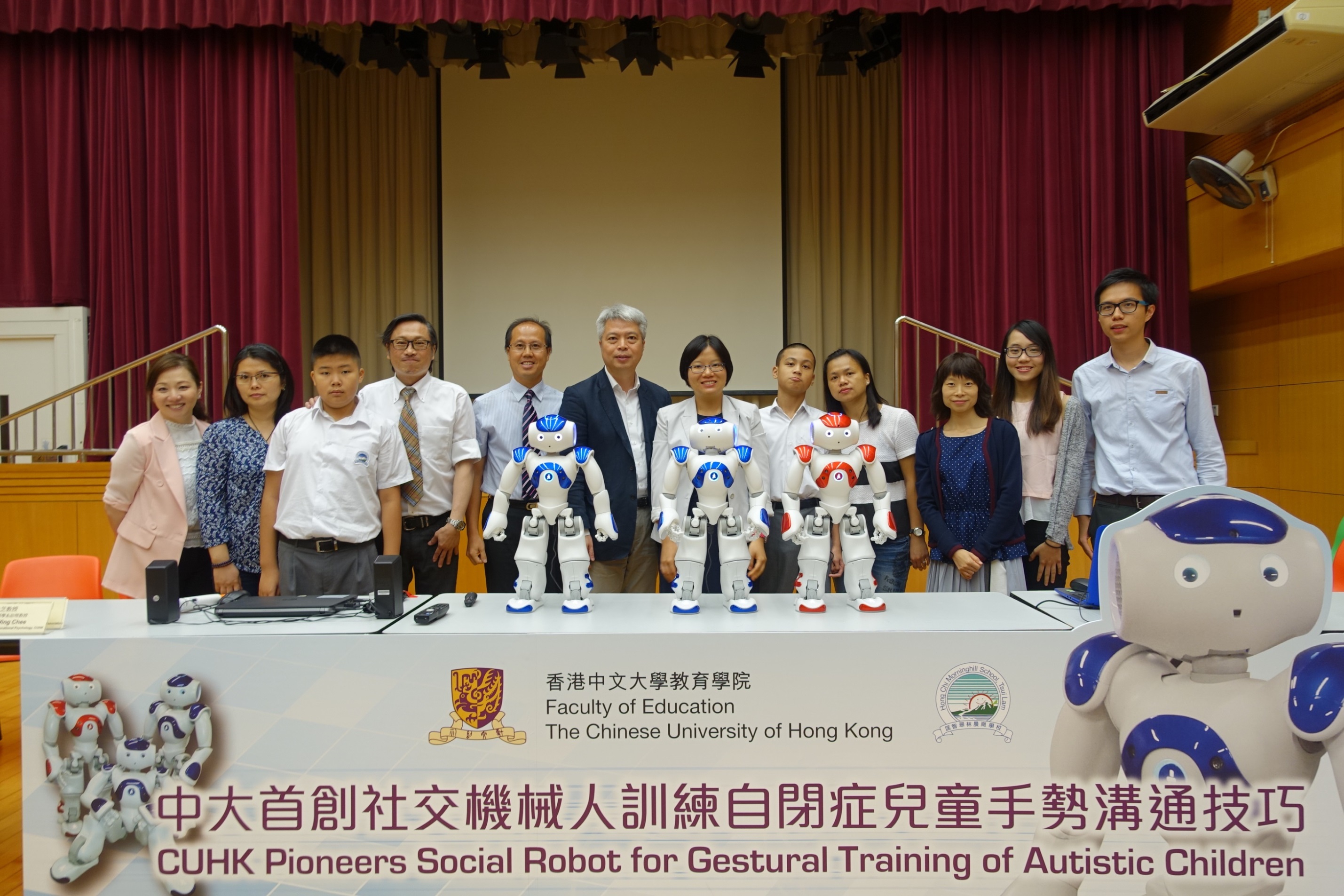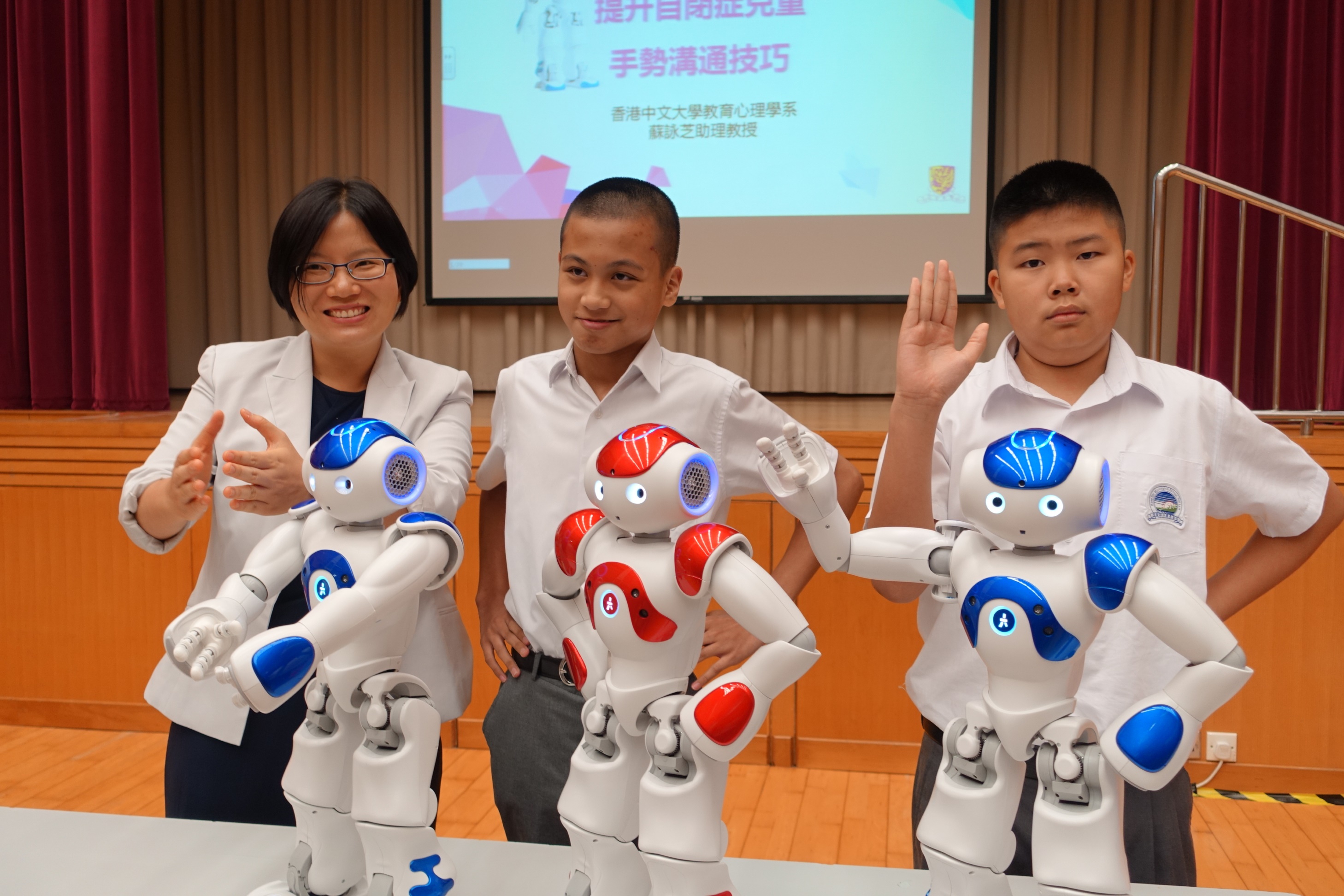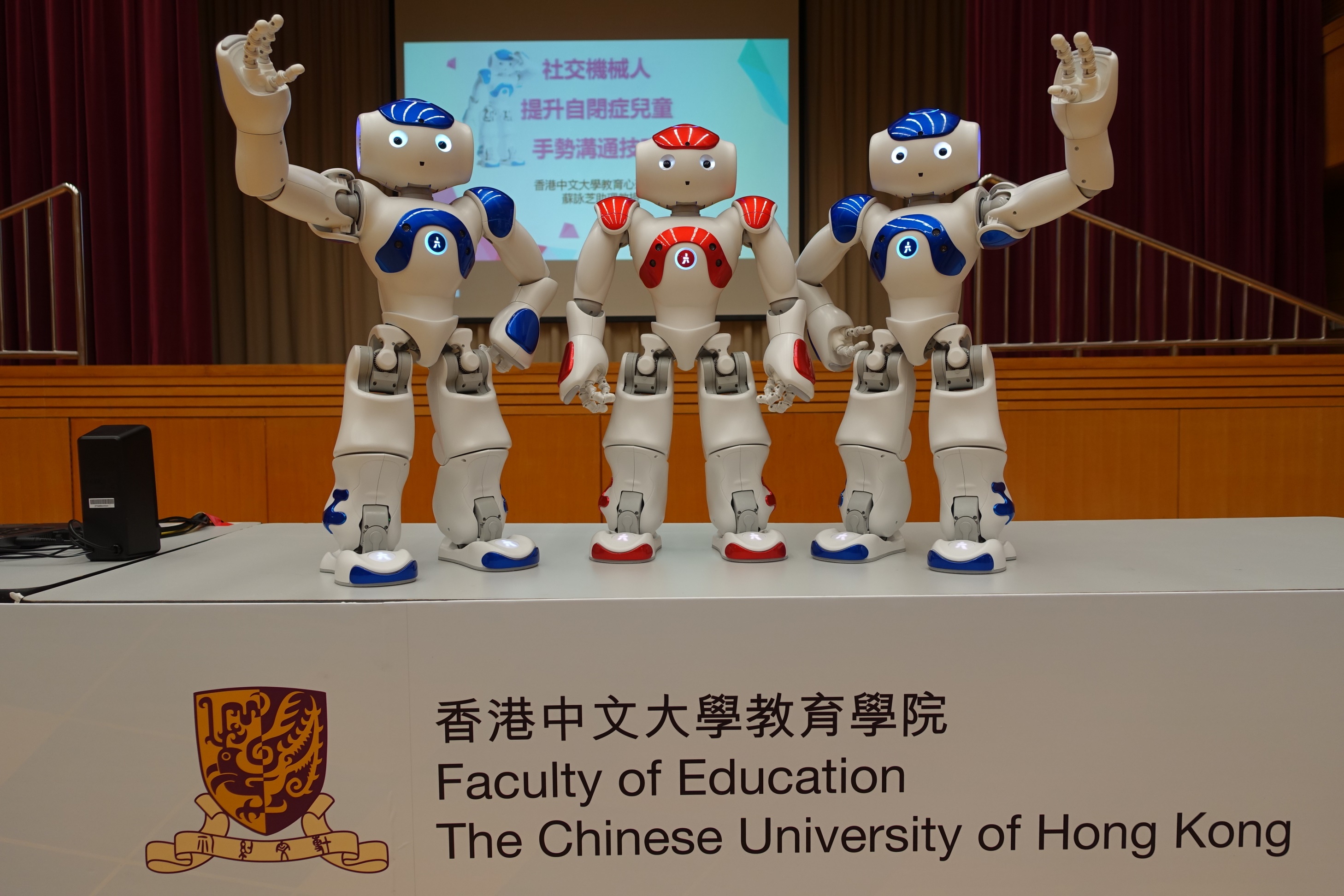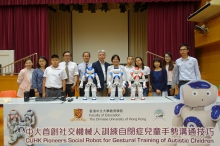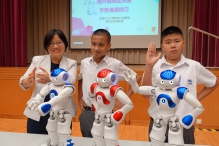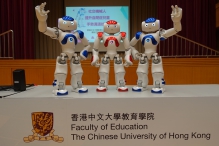CUHK
News Centre
CUHK Researcher Pioneers Use of Social Robot to Enhance Gestural Communication Skills of Autistic Children
An interdisciplinary research team is employing humanoid robots, NAO, to enhance the gestural communication skills of autistic children. Led by Prof. So Wing-Chee, Assistant Professor, Department of Educational Psychology, The Chinese University of Hong Kong (CUHK), the robot-based intervention is a pioneer in Hong Kong, and even the world, in promoting the gestural communication skills of autistic children.
Professor So formed her research team with colleagues from the Faculty of Engineering and the Faculty of Arts to design an effective intervention program using social robots, NAO, to reduce the frequency of challenging behaviors by teaching children with low-functioning autism spectrum disorders (ASD) to effectively communicate their needs and feelings via gestures. The Faculty of Education has introduced three NAO robots, with the help of the programmers at the Faculty of Engineering. The robots are able to teach children eight gestures (angry, annoyed, dizzy, scared, hot, hungry, noisy or smelly).
Difficulties faced by children with ASD
In Hong Kong, 13.22% of school-aged children and adolescents with special needs are diagnosed with ASD. In 2013-2014, more than 3,000 children with ASD were enrolled in mainstream schools. Some of the children with ASD, especially those with IQs below 70 (i.e., having intellectual disabilities), are enrolled in special schools.
Children with autism spectrum disorders (ASD) are characterized by impairments in communication and social interaction. In addition, they have sensory issues and often produce certain maladaptive responses, which are termed ‘challenging behaviors’. Challenging behaviors can take several forms, ranging from physical aggression, verbal aggression, property destruction, tantrums and self-injurious behaviors, which include head-banging, self-scratching, self-biting, hair pulling, self-cutting and self-pinching. This self-injury is one of the most distressing and difficult behaviors that parents, caregivers, family members and individuals with autism themselves may be faced with. Other than the immediate negative physical impact, these behaviors also have the dire consequences of social exclusion, limited educational and vocational opportunities, inability to learn novel skills, as well as diminishing the effectiveness of other therapies. The fact that such behaviors worsen with age emphasizes the need for early intervention.
Proven success in using robot animation to promote gestural communication
NAO was launched by a French robotics company in 2008 and has been used around the world for research and educational purposes. Prior to NAO, Professor So led a research which proved the effectiveness of online robot animation in promoting gestural comprehension and production. 20 ASD children aged 6-12 were taught to recognize 20 gestures produced by the robot animation, to imitate them, and produce them in appropriate social contexts. Across three phases, significant differences were found between the results of the pretest and the immediate and follow-up posttests. The children generalized their acquired gestural skills to a novel setting with a human researcher. These results suggest that video modeling by a robot animation is effective in teaching children with low-functioning ASD to recognize and produce gestures, and the online version of the research paper has been accepted for publishing by the Journal of Computer Assisted Learning.
Professor So said, ‘Gesture is an effective channel for communication. It can help reduce challenging behaviors of autistic children. This intervention programme has benefited 93 students with low-functioning autism so far, including the 20 participants whose data was published. The other 73 students received the gestural intervention at home. So, this is the first home-based gestural intervention program. The parents were trained at the special school and each of them received a manual for their reference. We are pleased to have the support from the Knowledge Transfer Fund, The Faculty of Education and Department of Educational Psychology at CUHK.’
The innovative idea of using social robots
Following the success of the gestural training by animated robot, Professor So formed her team which then partnered with the Hong Chi Morninghill School, Tsui Lam, to use the social robot to teach their students with ASD (aged 6-12) to recognize and produce the target gestures. The intervention programme includes four training sessions in which the social robot narrates a scenario (e.g., “John goes to the park and he sees a snake. John is scared. Thus, John produces this gesture [NAO produces a scared gesture]”. For each gesture, two different scenarios will be presented. Multiple pretests and posttests were administered to examine the effectiveness of the training program.
Compared to the students in the control group who had not received training, students in the intervention group were more capable in recognizing and producing the eight gestures produced in the scenarios presented during training. More importantly, students in the intervention group were also able to generalize the acquired gestural communication skills to the new scenarios that were not presented during training. Even more promising, these students could recognize and produce the same gestures in human-to-human interactions.
Professor So said, ‘Individuals with ASD tend to have low interest in other humans and they prefer robotic toys. This program can be widely used in clinical settings, special schools, and even mainstream schools that have been accepting an increasing number of students with ASD. In future research, we will compare the effectiveness of robot-based intervention to that of human-based intervention in which a human being takes the role of a trainer.’
Biography of Prof. So Wing-Chee
So Wing-Chee is an Assistant Professor of the Department of Educational Psychology at The Chinese University of Hong Kong (CUHK), where she has been since 2012. She will become an Associate Professor in August 2016. Prior to arriving at CUHK, she worked for five years as an Assistant Professor in the Department of Psychology at the National University of Singapore (NUS). She received her B.S.Sc from CUHK in 2001 and her Ph.D. from the University of Chicago in 2007.
She has set up the Language and Gesture Laboratory at CUHK. Her research interest lies in language and cognitive development and in nonverbal communication among adults and atypically- and typically-developing children. She also develops intervention programs to promote non-verbal communication skills in children with Autism Spectrum Disorders. These programs have benefited more than a hundred children with autism in Hong Kong.
She has published more than 20 articles in international peer-reviewed journals. She has also won the Researcher Excellence Award at CUHK in 2014. She is currently an Associate Editor with Frontiers in Education (Special Needs Education).
(From 7th left to 4th left) Prof. So Wing-chee, Assistant Professor of Department of Educational Psychology, CUHK, Mr. Chan Ka-lap, Assistant General Secretary (Education) of Hong Chi Association, Dr. Daniel Fok, Principal, Mr. Chan Chun-hung, Vice Principal, Ms. Lam Ka-yee, Senior Teacher (1st left) , Hong Chi Morninghill School, Tsui Lam, together with research team members, parents and students, introduce how social robots help promote gestural communication of autistic children.
Prof. So Wing-chee and two students of Hong Chi Morninghill School, Tsui Lam demonstrate various gestures with the social robots.


